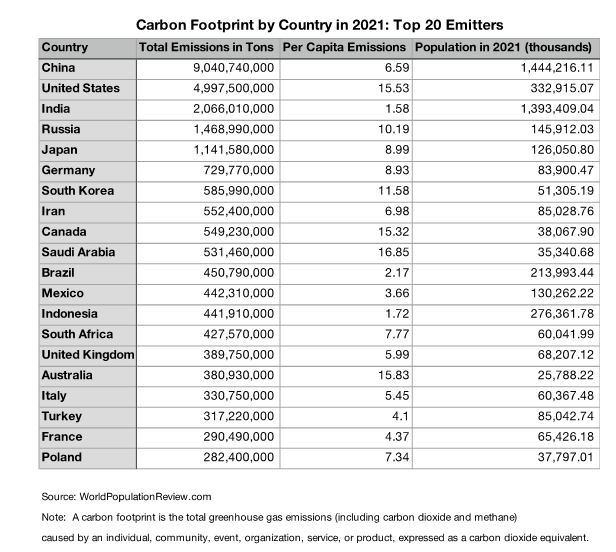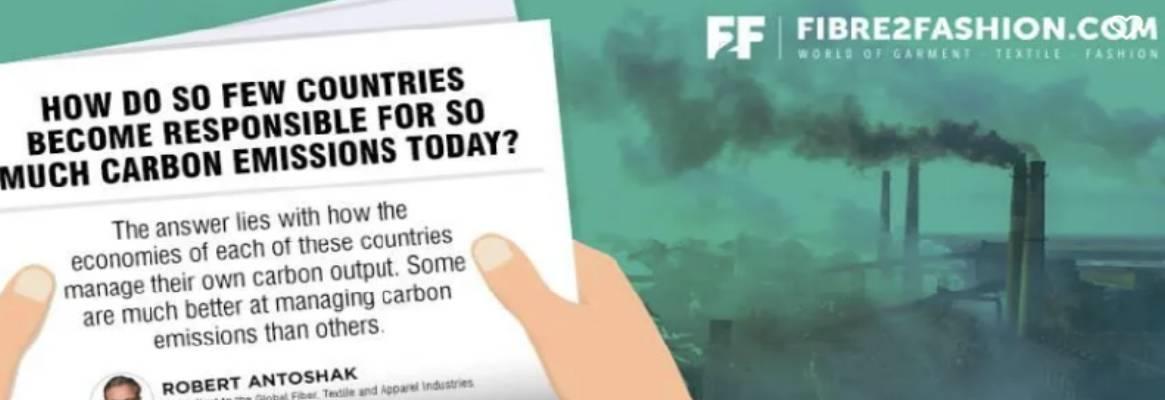The textile industry is often touted as one of the biggest polluters to the environment. The need of the hour is to provide complex solutions to the complex nature of the textile industry issues by involving governments and consumers alike. Also, the biggest polluters need to work together if we hope to tame the runaway effects of climate change.
There's been so much talk about how the global pandemic will spur more sustainability in manufacturing industries such as textiles and apparel. As the thinking goes, young consumers push brands and retailers to become more sustainable and transparent about where and how their products are made. In turn, this push from consumers trickles down to the manufacturers of these products sold by brands and retailers.
This is a tidy story, but it omits some glaring problems along the road to industry sustainability. Perhaps the most significant issue is global cooperation on carbon emissions. Yes, we have the Paris Climate Accords, but that agreement is only a down payment towards cleaning up the planet's environment. A lot more will have to be done to avoid irreversible damage to the planet's ecology.
Our industry is often cited as one of the worst polluters. We're also noted as being great marketers of empty, greenwashed solutions to complex environmental problems. Indeed, there are no "silver bullet" solutions to the complex issues surrounding sustainability and environmental sanctity. And complex solutions are usually required to solve complex problems.
Government Policy Options
Which leaves us with government interaction -- and the will of politicians to solve such complex problems. Industry solutions to environmental degradation only result in more and more NGOs and new and improved marketing campaigns to gloss over the issues. In the meantime, the planet continues to suffer -- and by default, so do people everywhere.
Understand my point: it's positive that so many groups are sprouting up to combat global climate change. However, what's lacking is a coordinated industry approach to deal with our industry's impact on the environment.
Current industry initiatives, although well-meaning, are fragmented, often contradict themselves, and produce conflicting information. Unfortunately, these groups often spend as much time competing over which programme or initiative is better than actually working to combat climate change. Okay, this may be an overstatement, but not by much!
What's required is a policy solution. Government intervention. Negotiations at the highest levels of government. And every country should have a stake in the talks. Moreover, such discussions should be designed to supersede the down payment established by the Paris Climate Accords.
The Biggest Polluters
Further, the biggest polluters need to work together if we as a species hope to tame the runaway effects of climate change. Here's a list of the top 20 countries with the most significant carbon footprint:

Not surprisingly, the top countries of this ignominious list start with China, which has the largest carbon footprint, followed by the United States, India, Russia, and Japan. The output of the remaining countries drops off sharply from there. However, the story changes dramatically when total emissions are calculated per capita: Saudi Arabia is the largest polluter, followed by Australia, the United States, Canada, and South Korea.
The 20 countries listed in the table account for 78 per cent of global emissions, according to WorldPopulationReview.com. Which begs the question: how do so few countries become responsible for so much carbon emissions today? The answer lies with how the economies of each of these countries manage their own carbon output. Some are much better at managing carbon emissions than others.
Regardless, there's still a solid case to be made for greater government cooperation to bring carbon emissions under control. Without dialogue, things will continue along. NGOs and private companies will do their best to promote sustainability, but accusations of greenwashing will persist. In some ways, efforts to control carbon emissions and encourage sustainable production will simply run-in place. There must be a better way, which lies with collective government action.
A Missed Opportunity
Recently, climate meetings between the United States and China proved fruitless. US climate envoy, John Kerry, met recently via video link with China's Foreign Minister Wang Yi and Kerry's counterpart on climate issues, Xie Zhenhua, during a visit to China. But discussions to develop a common approach to combat global warming went nowhere. Currently, relations between both countries are not on good terms, with an overall lack of cooperation on many issues, including trade, political concerns, and economic issues.
When two of the world's largest emitters of greenhouse gases have a difficult time even beginning a dialogue on how to tackle climate change, then the government policy approach seems to lack the legs necessary to improve upon the Paris Climate Accords. It's a lost opportunity. In the meantime, our industry and dozens of others will continue to cope the best they can.
The Role of Consumers
And then there are consumers -- the other side of the climate change equation. Sure, manufacturers and exporters emit a lot of greenhouse gases, but so do consumers, particularly in the West. Many of these consumers acknowledge the problem. As a result, there are calls for reducing consumer output of greenhouse gases: drive less, walk more, buy smarter, buy less. There are other examples.
But the belief in buying less poses an existential threat to our industry. Indeed, the global apparel industry produces many more garments each year than there are people in the world. But this is done not simply in the name of overproduction but rather to expand product diversity and availability for consumers – the ultimate customer. In the West, consumer demand for easily affordable, fashionable clothing remains the driving force in the apparel business.
However, as the global pandemic has dragged on, some consumers reevaluate how many clothes they really need. The days of overstuffed closets may be waning as younger consumers choose to spend their money on products other than clothing. Think about electronic gadgets and the like.
What's more, there's a growing belief that by purchasing less clothing, consumers will help the cause of combatting climate change. Think about it, some say: buy less, and fewer greenhouse gases are emitted to make and ship stuff. A simple solution to a complex problem. But as we've discussed above, simple solutions to complex problems are not really solutions at all. This is particularly the case when we consider that fast fashion, the bane of environmentalists, continues to function and prosper during these pandemic-induced times.








Comments